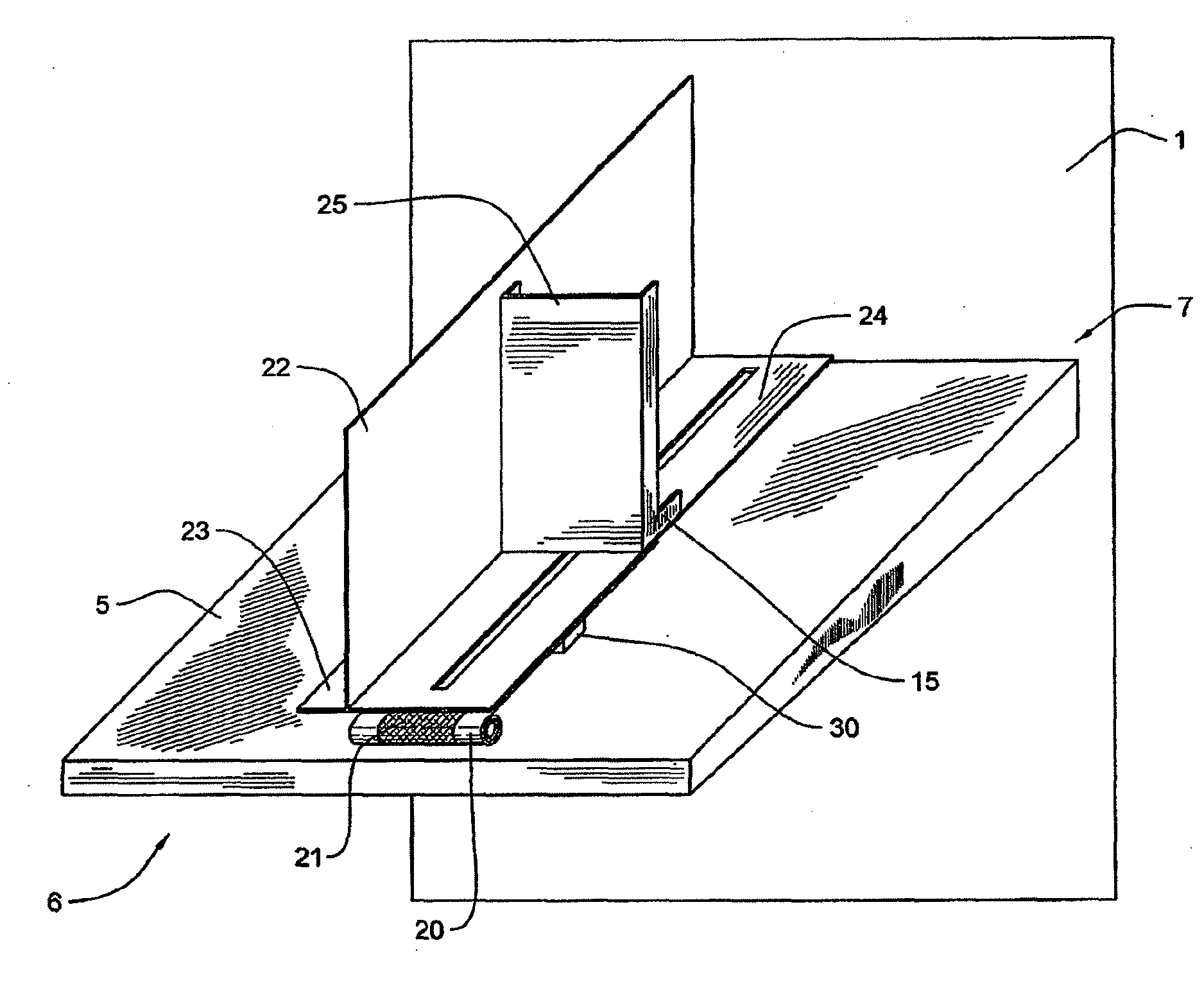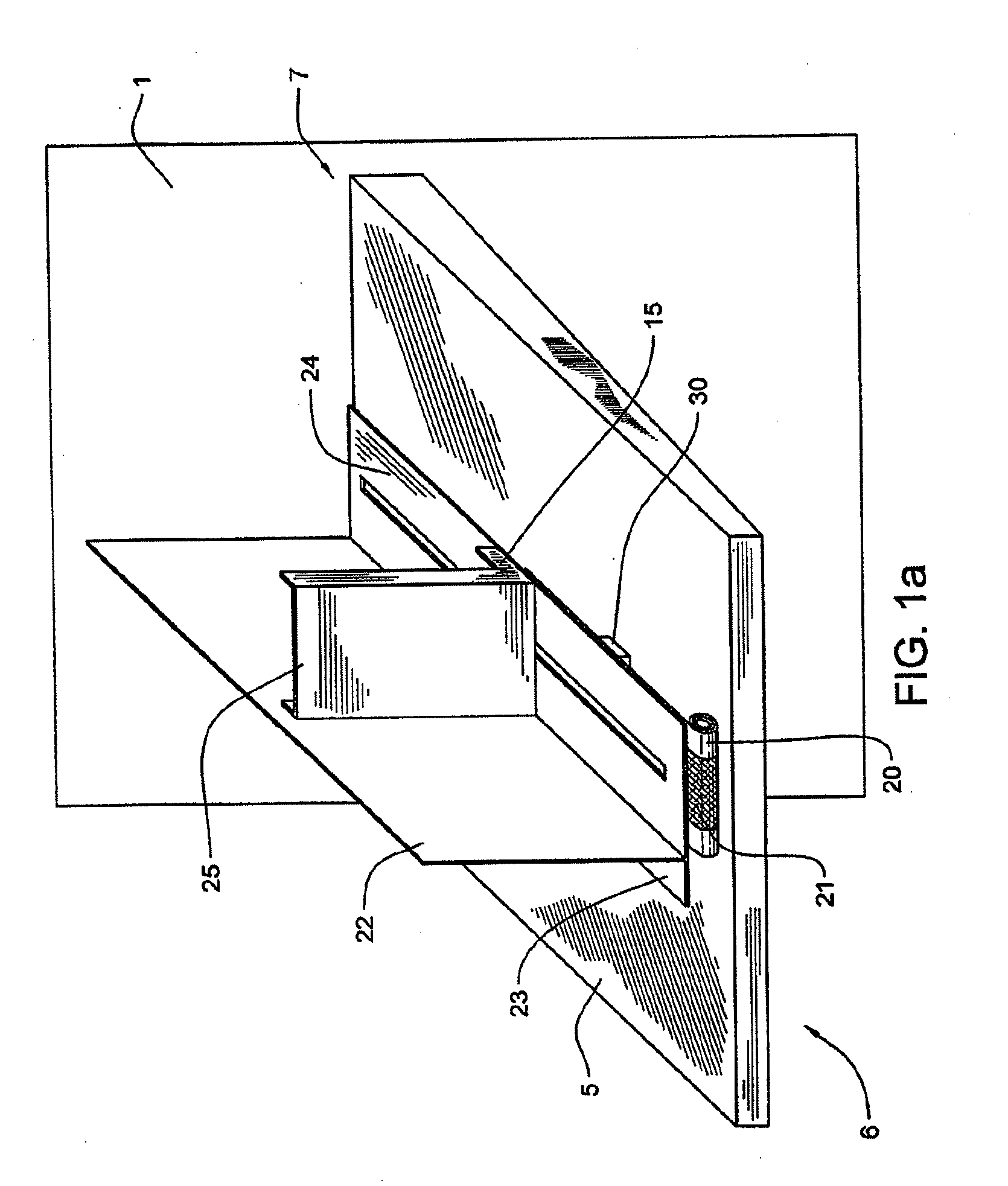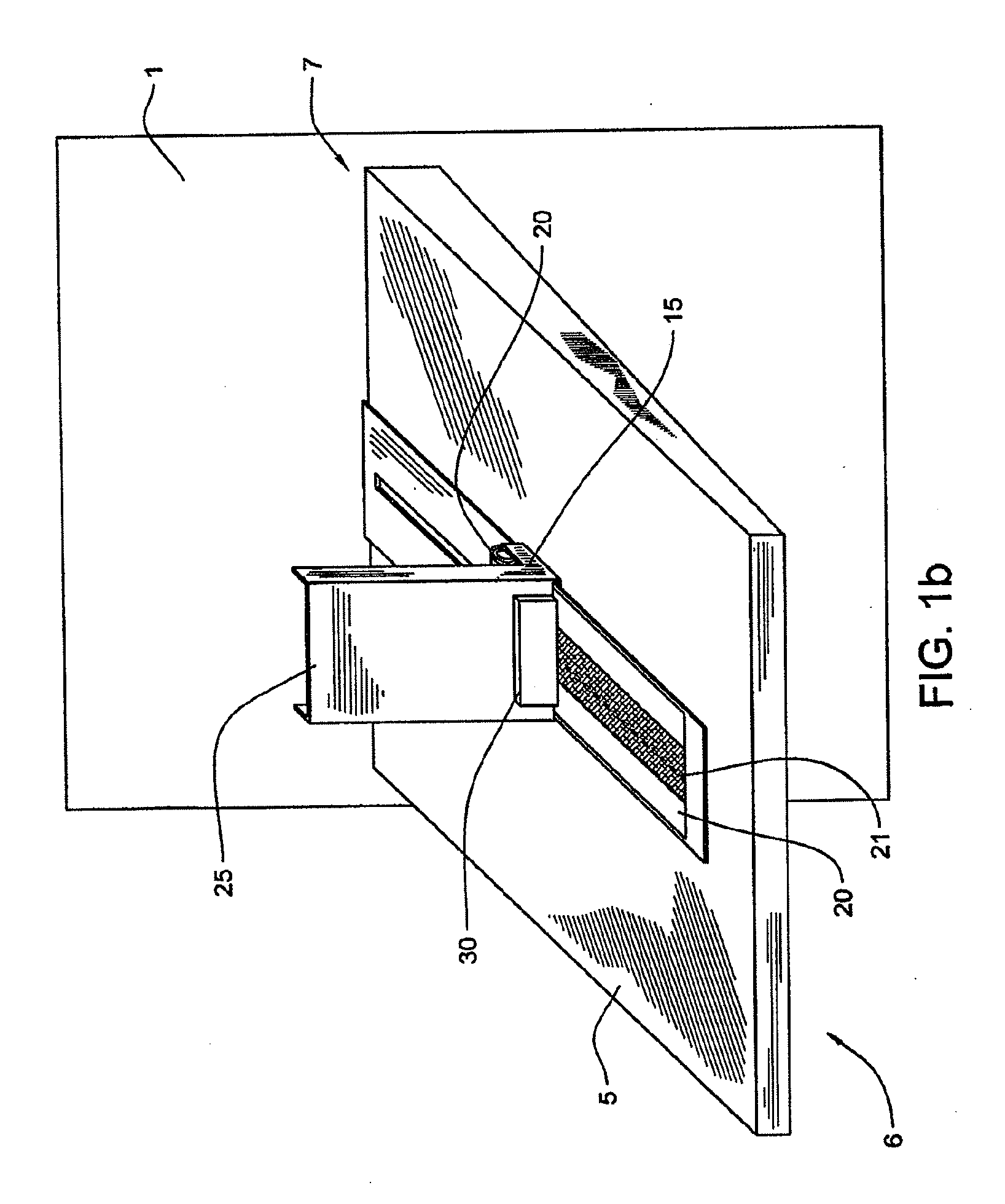System for Inventory Management
a technology of inventory management and system, applied in the field of shelving and product display, can solve the problems of theft, large cost of inventory management in the operation of retail stores, and significant portion of inventory management cost, and achieve the effect of preventing th
- Summary
- Abstract
- Description
- Claims
- Application Information
AI Technical Summary
Problems solved by technology
Method used
Image
Examples
Embodiment Construction
[0042]The present invention may be used with the shelf and pusher assembly system described in either U.S. Pat. No. 6,041,720 to Hardy or U.S. Pat. No. 4,830,201 to Breslow. The present invention may also be used with other pusher assemblies and shelf configurations known in the art.
[0043]FIG. 1a illustrates an embodiment of the present invention. A shelf wall 1 is configured to support a shelf 5. The shelf 5 has a front side 6, the front side 6 typically facing the aisle where customers walk when shopping, and a rear side 7. Mounted on the shelf is a pusher assembly 15. As depicted, the pusher assembly 15 includes a biasing mechanism such as a sheet coil spring 20 containing an indicia strip 21. The pusher assembly 15 further includes an integral divider wall 22 and a floor section 23 on one side of the divider wall 22 and a floor section 24 on the other side of the divider wall 22. The sheet coil spring 20 is operatively connected to a pusher 25 and can be used to urge the pusher ...
PUM
 Login to View More
Login to View More Abstract
Description
Claims
Application Information
 Login to View More
Login to View More - R&D
- Intellectual Property
- Life Sciences
- Materials
- Tech Scout
- Unparalleled Data Quality
- Higher Quality Content
- 60% Fewer Hallucinations
Browse by: Latest US Patents, China's latest patents, Technical Efficacy Thesaurus, Application Domain, Technology Topic, Popular Technical Reports.
© 2025 PatSnap. All rights reserved.Legal|Privacy policy|Modern Slavery Act Transparency Statement|Sitemap|About US| Contact US: help@patsnap.com



